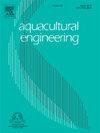太阳能自动喂鱼船:一种具有成本效益和可持续发展的水产养殖解决方案
IF 4.3
2区 农林科学
Q2 AGRICULTURAL ENGINEERING
引用次数: 0
摘要
水产养殖是一个快速发展的产业,越来越被认为是世界不断增长的人口的重要营养来源。传统的养鱼是劳动密集型和非技术的,工人不熟练,饲料分配无组织,导致成本高和环境恶化。为了解决这些问题,本研究设计并实施了一艘太阳能自动喂鱼船。这种创新的系统利用机器学习和基于微控制器的控制单元(即存储器和具有I2C通信协议的输入/输出接口),在每天的预定时间以精确的间隔提供饲料,无需人为干预,确保最佳的鱼类营养和生长。将太阳能整合到船的操作中,通过显着减少碳足迹,体现了对环境可持续实践的承诺。此外,喂鱼过程的自动化不仅最大限度地减少了对人工的依赖,还有助于节省大量成本,提高操作精度,提高整体效率。总的来说,这些进步加强了水产养殖企业的经济可持续性和有效管理。本文章由计算机程序翻译,如有差异,请以英文原文为准。
Solar-powered automated fish-feeding boat: A cost-effective and sustainable solution for aquaculture
Aquaculture is a rapidly growing industry that is increasingly recognized as a vital source of nutrition for the world's expanding population. Traditional fish farming is labor-intensive and non-technical, with unskilled workers and unorganized feed distribution resulting in high costs and environmental deterioration. To address these concerns, a solar-powered, automated fish-feeding boat has been designed and implemented in this study. This innovative system utilizes machine learning and a microcontroller-based control unit (i.e., a memory and input/output interface with I2C communication protocol) to deliver feed at a predetermined time at precise intervals in each day without human intervention, ensuring optimal fish nutrition and growth. The integration of solar power into the boat's operation exemplifies a commitment to environmentally sustainable practices by significantly reducing its carbon footprint. Furthermore, the automation of the fish-feeding process not only minimizes reliance on manual labor but also contributes to substantial cost savings, heightened operational precision, and improved overall efficiency. Collectively, these advancements enhance the economic sustainability and efficient management of aquaculture ventures.
求助全文
通过发布文献求助,成功后即可免费获取论文全文。
去求助
来源期刊

Aquacultural Engineering
农林科学-农业工程
CiteScore
8.60
自引率
10.00%
发文量
63
审稿时长
>24 weeks
期刊介绍:
Aquacultural Engineering is concerned with the design and development of effective aquacultural systems for marine and freshwater facilities. The journal aims to apply the knowledge gained from basic research which potentially can be translated into commercial operations.
Problems of scale-up and application of research data involve many parameters, both physical and biological, making it difficult to anticipate the interaction between the unit processes and the cultured animals. Aquacultural Engineering aims to develop this bioengineering interface for aquaculture and welcomes contributions in the following areas:
– Engineering and design of aquaculture facilities
– Engineering-based research studies
– Construction experience and techniques
– In-service experience, commissioning, operation
– Materials selection and their uses
– Quantification of biological data and constraints
 求助内容:
求助内容: 应助结果提醒方式:
应助结果提醒方式:


